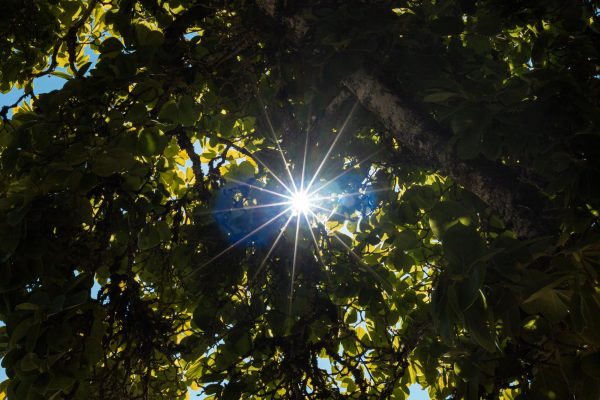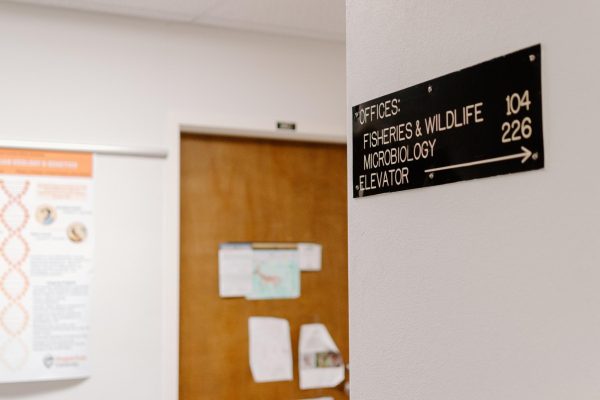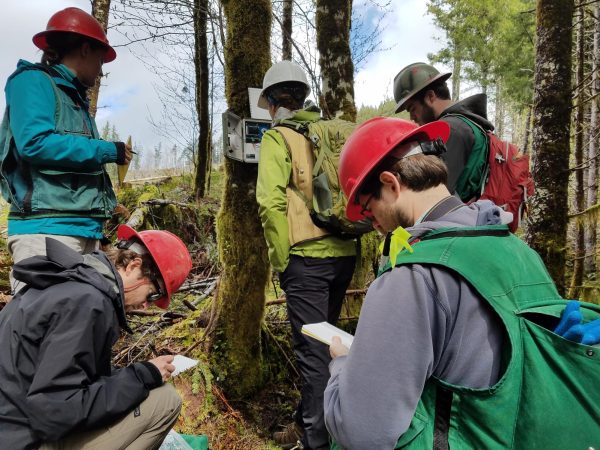Oregon drivers: bee on the lookout for the state’s newest license plate
Taxonomist at the Department of Horticulture at Oregon State University, Lincoln Best, shows new Pollinator Pariside License Plate cut out on paper Feb. 1. This is the first license plate in Oregon with a bee research initiative.
February 27, 2023
Coming soon to a car near you: Oregon’s new “Pollinator Paradise” license plate, which supports bee research being conducted at Oregon State University.
Funds raised by the plate will be divided between several bee programs in OSU’s Department of Horticulture, according to Cassidy Carpenter, administrative assistant for the Pollination Health Lab.
According to Carpenter, recipients of the plate’s revenue include OSU’s honeybee research program, projects conducted by graduate students in the Department of Horticulture, and the Oregon Bee Atlas, a program taking inventory of all bee species found in Oregon.
“This new source of funds will help establish the Oregon Bee Atlas as an ongoing initiative in the state,” Carpenter said. “The Atlas already leads the US in documenting bee biodiversity and the plants used by these bees…but this funding will help Oregon have the best long-term data on bee biodiversity anywhere in the world.”
Oregon State has already reached their goal of selling 3,000 vouchers during the plate’s presale period, meaning production of the plate can begin. Those who have a voucher for the plate can redeem it at any Oregon DMV; otherwise, the plates will become available for purchase at DMV locations once production is complete, which is expected to take four to six months, according to the Pollinator Plate website.
While the plate, designed by high school student Marek Stanton features two bees — a honeybee and a yellow-faced bumblebee — Oregon is home to many more bee species.
According to Carpenter, new species of bees are found in Oregon every year, and while 500 species of bees had been identified in Oregon in 2018, today that number stands around 700.
Carpenter said bumblebees are an important pollinator for, among other plants, red clover, the flower making up the license plate’s red background. Honeybees, meanwhile, are the state’s most important pollinator of agricultural crops.
Beyond their role as a pollinator, honey bees also play a significant role in Oregon’s agriculture through the production of honey.
According to a press release from the United States Department of Agriculture’s National Agricultural Statistics Service, the state of Oregon produced over 2.6 million pounds of honey in 2021, with the total value of the honey being approximately $5.7 million. A chunk of the license plate funds will be directed towards research to support these agricultural honey bees, according to Carpenter.
“The honey bee research program has actually been working on new techniques to keep commercial colonies thriving in the state, and this funding ensures that the work proceeds,” Carpenter said.
According to Carpenter, about 20 students currently work across the Department of Horticulture’s bee programs, in the Garden Ecology, Apiculture and Pollinator Health Labs, which provide hands-on opportunities for students interested in bees.

























































































































